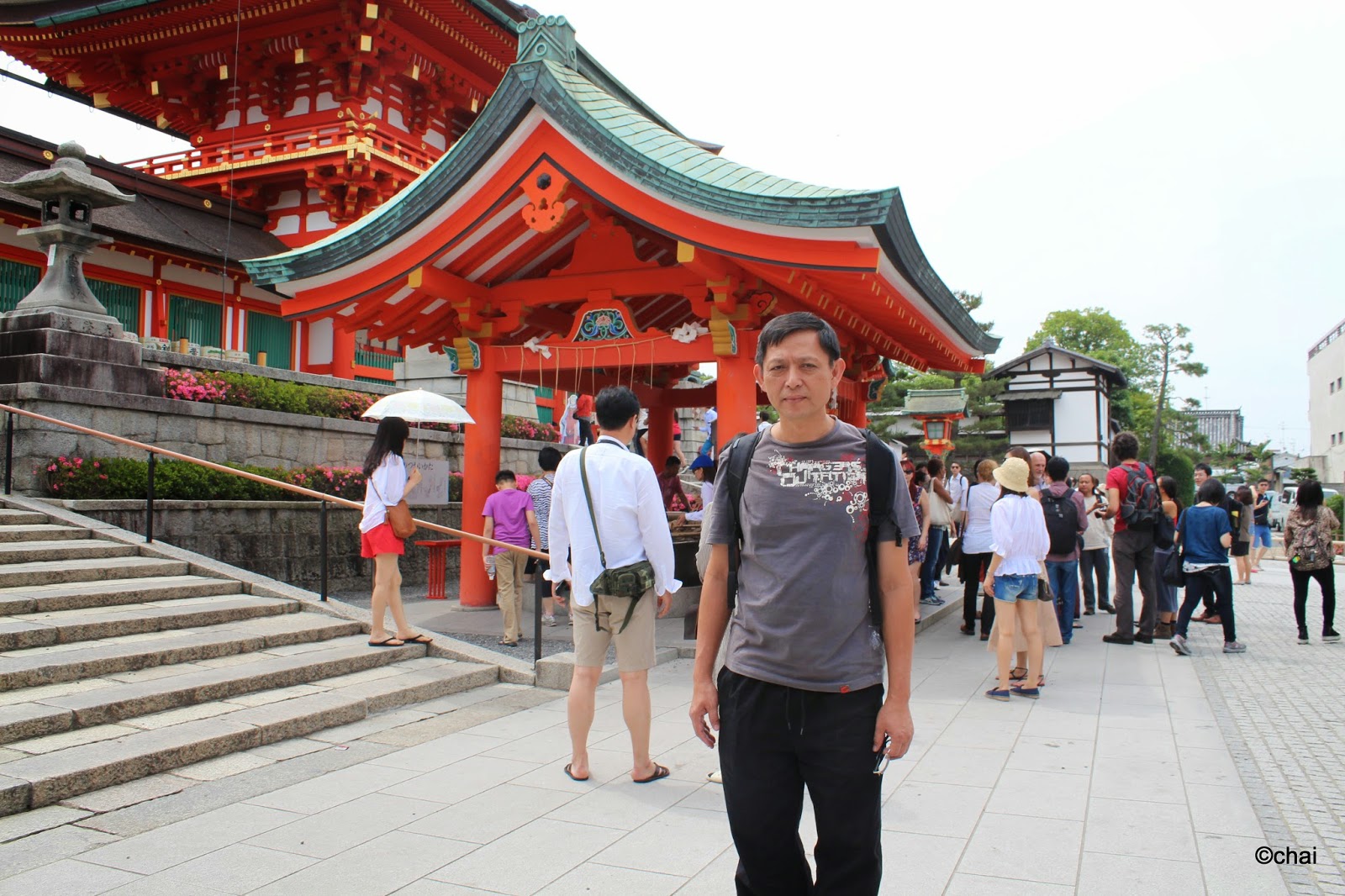American author, Arthur Golden's Memoirs of a Geisha mesmerized me so much that I finished reading it in one day! 8 years after the mesmerizing novel publication, it was adapted into a film. The film however arose many controversies, not only the three main casts were non-japanese (chinese actresses Zhang ZiYi, Gong Li and Malaysian actress Michelle Yeoh), the film also reminded the chinese people of their fellow women who were captured and forced to be 'comfort women' during the Sino-Japanese War.
 |
| Fushimi Inari Train Station on the Keihan Rail Line. |
What appears to be a normal film became the object of criticism and controversies. Controversy arose in China from an apparent confusion of equating geisha with prostitution. It seems that China has not forgiven Japan for the war and atrocities that its troops commited in the second Sino-Japanese war (1937-1945). Zhang ZiYi who was the main cast of the film was denounced as an "embarrassment to China" and the film was subsequently banned in China.
 |
| Even the pillars in the train stations are painted in vermilion! |
It sure is difficult being a female, actresses are just like any other salary woman out there who has to work for a living. I doubt any movie producers would cast any non-bankable and non-prominent actresses in the film production which they invested millions of dollars.
 |
| It's fairly easy to get to Fushimi Inari, it has its own train station, the station on the Keihan line. One needs to walk a bit to reach the shrine but believe me, it's a pleasant walk. Unlike the JR station; it is directly opposite the shrine. |
On the other hand, I would rather not delved into the story about the Sino-Japanese war as it opens a can of worms. It would be a story for another day (If I ever write about it!). I am more interested in the vermilion torii gates that made a tunnel of torii gates featured in the film. 'Chiyo' runs through them in one of the scenes in the Memoirs of a Geisha film. The vermilion torii gates are found in Fushimi Inari Taisha, 伏見稲荷大社. It is a shinto shrine, a famous shrine in southern Kyoto.
 |
| You would not get lost if you follow the direction from the train station. |
I was debating with myself whether or not to go to Fushimi Inari Shrine. Traveling with children is never easy but thankfully the kids were a good sport, they did not whine about the journey. We never realised we had pairs of incredible legs. Walking was the order of the day!
 |
| Ring the bell to summon the God? |
 |
| Here it is, the Torii gates tunnel that was featured in the movie 'Memoirs of a Geisha'. |
 |
| So many tourists attracted to this vermilion torii gates. |
My primary reason for visiting Fushimi Inari Shrine was to see the 'Senbon Torii' (thousands of torii gates), the shrine itself is very attractive, and of course the hiking trails behind the shrine. The hike to the summit takes about an hour and half depending on one's pace, there are restaurants along the route but we did not go for it. Those who have the whole day to spend in this fascinating vermilion place should certainly try the hike. The shrine has ancient origin, predating the capital's move to Kyoto in 794. Photographs do not do justice to this charming shrine, being here in person is awesome!























No comments:
Post a Comment